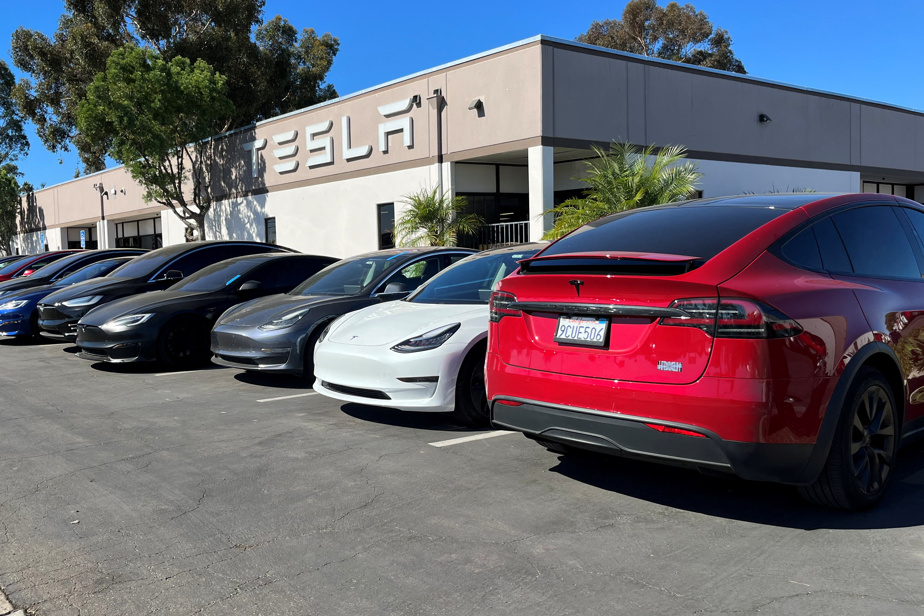(New York) Tesla sales jumped in the final three months of 2023 after the automaker slashed prices and customers rushed to take advantage of tax breaks on electric vehicles — conditions that will be difficult to reproduce in 2024.
The company said Tuesday it sold 484,500 cars in the fourth quarter, up from 435,000 in the third quarter and 405,000 in the fourth quarter of 2022. For the full year, Tesla sold 1.8 million vehicles . With these gains, Tesla is on track to sell more than 2 million cars in 2024, which could allow it to overtake established automakers like Mercedes-Benz and Renault.
The rebound in sales in the fourth quarter should help ease investor concerns about Tesla’s ability to defend its dominant position in the electric vehicle market in the face of increased competition from traditional automakers.
Over the past year, Tesla has lost market share to rivals such as General Motors, Hyundai, Ford Motor Co. and Volkswagen, which have launched more electric vehicles. Half of the electric cars sold in the United States are sold by Tesla. In 2022, Tesla represented two-thirds of the market.
Another electric vehicle maker, Rivian, said Tuesday it sold nearly 14,000 vehicles in the last three months of the year. This figure is up significantly from the previous year, but down about 10% from the third quarter.
In China, the largest market for electric cars, Tesla faces intense competition from BYD and other Chinese automakers. BYD sold 526,000 fully electric cars globally in the fourth quarter, surpassing Tesla, a milestone many auto analysts expected given the Chinese company’s rapid growth.
In Europe, Volkswagen and its Audi and Skoda divisions sell more electric vehicles than Tesla, although Tesla’s Model Y is by far the best-selling model on the continent, according to data compiled by Schmidt Automotive Research.
Tesla had warned on its website that the two cheapest versions of its Model 3 sedan would no longer qualify for $7,500 in federal tax credits after December 31. These cars are equipped with batteries made in China. Germany and some other European countries have also removed subsidies for buyers of electric vehicles.
To maintain sales, Tesla has lowered prices, offering Model 3s on its website for well under $30,000 after tax credits are taken into account. By the end of December, the number of low-cost cars listed on the website appeared to have declined, suggesting that the strategy had been successful. But the price cuts cut into Tesla’s profits, which fell 44% in the third quarter from a year earlier.
Tesla said it will announce its fourth-quarter 2023 results on January 24.
Even though fewer Teslas will qualify for federal tax credits in 2024, the company is in a better position than most of its competitors. The Performance version of the Model 3, which includes upgraded wheels and brakes, will remain eligible for the grant, as will all versions of the Model Y SUV, according to a federal government website. Tesla makes the batteries for these cars at a Nevada factory operated with Panasonic, allowing it to meet domestic manufacturing requirements.
Ford and other automakers rely on Chinese manufacturers for critical components. Ford is building battery factories in the United States, but they won’t start producing until 2025.
General Motors is making batteries at a new plant in Ohio, but is struggling to operate the plant at full capacity. Initially, only the Chevrolet Bolt will be eligible for credits, GM said in December. The Cadillac Lyriq and the electric Chevrolet Blazer will no longer be eligible.
GM said it is adjusting its supply chain so that these and other vehicles, including electric versions of the Chevrolet Silverado pickup truck and Equinox SUV, become eligible early this year.
Tesla and other automakers could also benefit from lower interest rates in the new year. Investors are betting that the Federal Reserve and other central banks will begin cutting interest rates as inflation slows.
